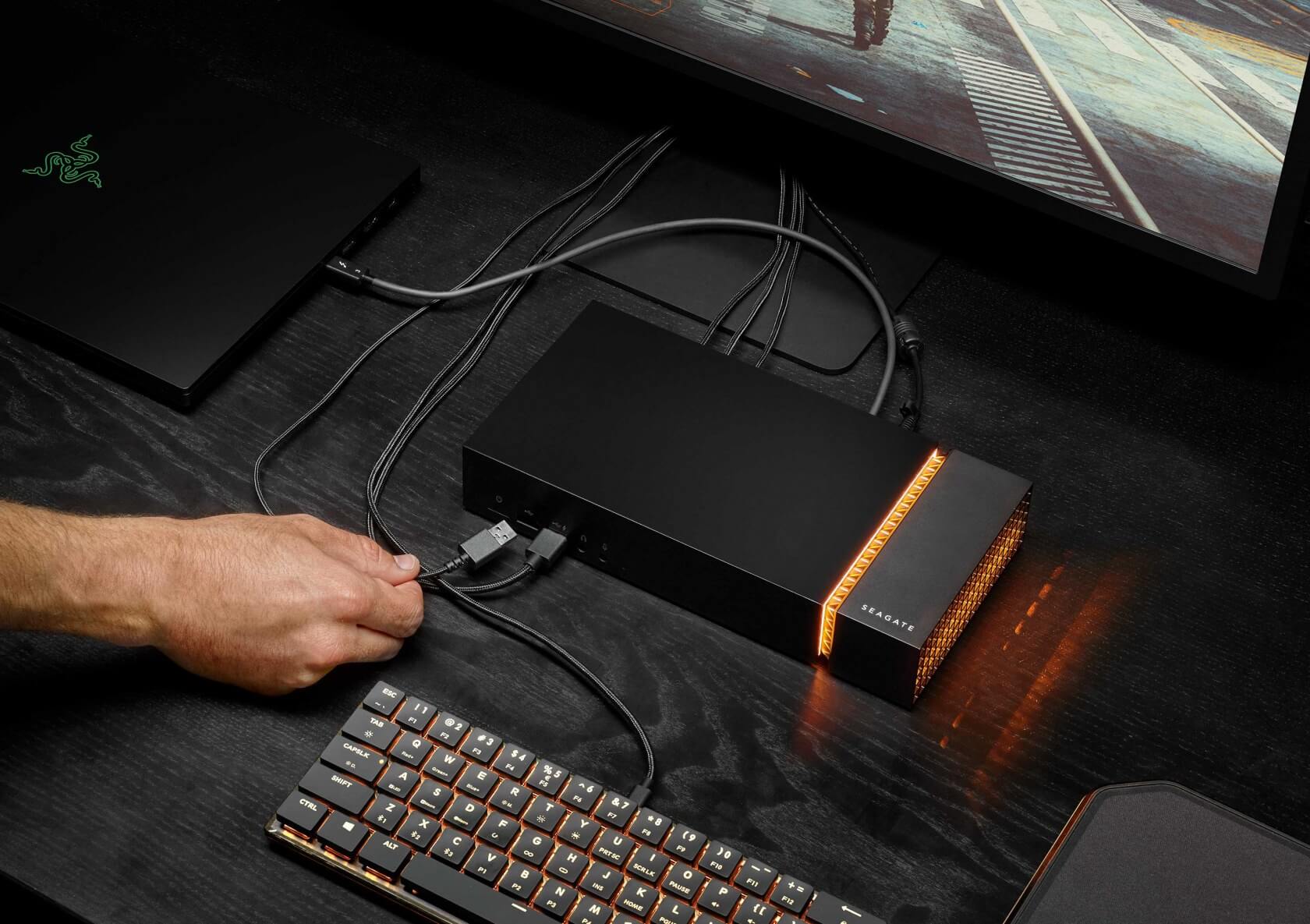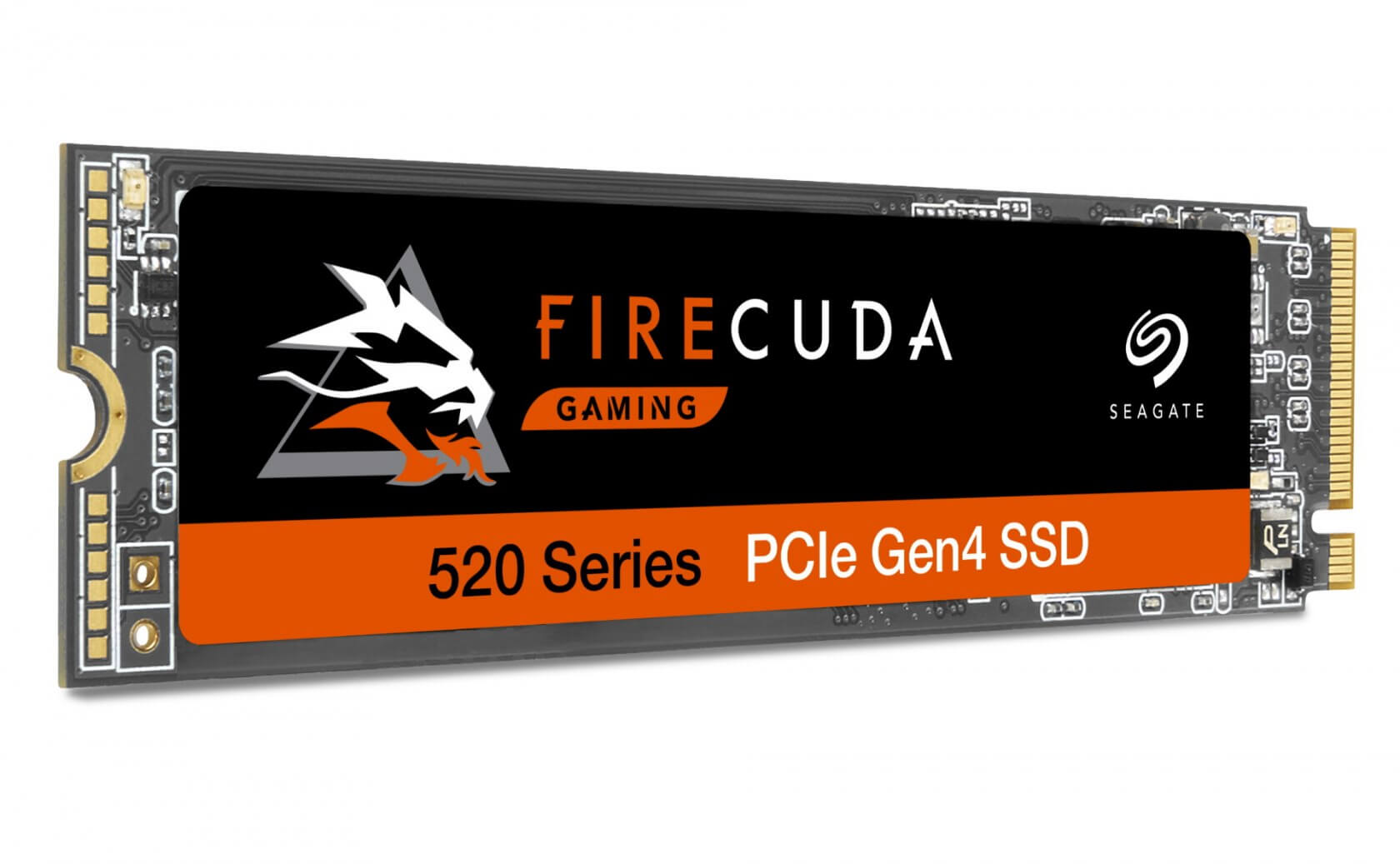If you thought the rush of PCIe 4.0-powered SSD announcements was over, think again. Following in the wake of reveals from Samsung, Sabrent, and Gigabyte, Seagate today launched the FireCuda 520: a blazing-fast M.2 PCIe 4.0 SSD from a company with a fairly reliable track record in the storage space.
Alongside the FireCuda 520's launch, Seagate also unveiled its FireCuda Gaming Dock, but we'll get to that in a bit. First, some details on the SSD: the FireCuda 520 ships with maximum sequential read and write speeds of "up to" 5,000 and 4,400 Mb/s, respectively, which is pretty close to what we've seen from other existing PCIe 4.0 SSDs.
If Seagate's claims are accurate, the FireCuda 520 would be about on par with the Sabrent Rocket, which managed to pull the same sequential read and write speeds in our own testing. However, in theory, the 520 could slightly outperform Corsair's MP600, which reached maximum sequential read speeds of 4,950 Mb/s and write speeds of 4,250 Mb/s. I
Regardless of where it stands in relation to other SSDs, the FireCuda 520 certainly looks to be one of the fastest consumer-oriented storage devices available for the time being (but we'd need to test it for ourselves to be certain). It ships in 500GB ($124), 1TB ($249), and 2TB ($429) capacities, which is pretty standard for modern SSDs (PCIe 4.0 or otherwise).
Before moving on, we should note that you'll need a PCIe 4.0-compatible motherboard before you can get full value out of the 520 or its competitors. For now, that means an AMD X570 board, but more options will undoubtedly crop up over time.

With the FireCuda 520 out of the way, let's circle around back to the similarly-branded Gaming Dock. The Dock is, according to Seagate, an "elite" storage hub that can connect your "entire battlestation."
While we can't say for sure whether or not the gadget lives up to that lofty claim, it certainly looks the part. The device is large, and quite intimidating-looking thanks to its customizable RGB lighting. The Dock is itself a 4TB hard drive, but it also features an M.2 expansion slot and a wide array of ports, which are as follows:
- Two Thunderbolt 3 ports (one for core connectivity, the other for an accessory)
- One DisplayPort 1.4 port
- 4 USB 3.1 Gen2 ports
- One USB 3.1 Gen2 "battery-charge" port
- 3.5mm audio and mic ports
In the box, you'll get a power supply, a single Thunderbolt 3 cable, and, of course, the Dock itself. Seagate is primarily marketing this device as a laptop companion, and it won't be cheap when it launches in a couple weeks. It'll run you a whopping $349, which is certainly not pocket change, even for PC gaming enthusiasts and power users.
